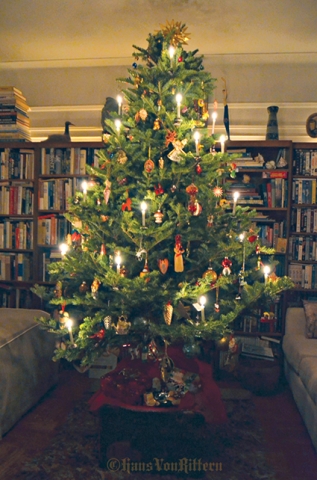Christmas Lights – A Festive ‘Did You Know…?’
There are a number of holidays celebrated throughout the year worldwide, and Christmas and New Year seem to be the most popular, celebrated on December 25 or January 7 (depending on the country) and January 1, respectively. Colorful festivals, concerts and various entertaining and religious events represent unalienable parts of the season.
Interestingly enough, preparing for the holidays is often just as exciting as the celebration itself. Throughout December, the world soaks up the festive atmosphere, the crowds rush to the shops to buy gifts for their friends and family and the cities' streets and houses are decorated with Christmas trees and a beautiful array of lights.
Even though Christmas trees and the lights can be found in every home, one rarely thinks about the history of the lights themselves- their origins and symbolism. Let’s have a look.
Christmas lights have evolved enormously since their first appearance. The first illuminated Christmas trees were lit up with small miniature candles in the 17th century in Protestant upper-class German families, the custom then being assimilated in other European countries. Some think the roots of using candles to decorate go back to pagan festivities, where light was of primary importance. After the Christianization of pagan holidays, the candle-lighting tradition was incorporated into Christmas customs. Candles were stuck to the tree branches with melted wax or attached using pins. The first candleholders were introduced around 1890.
The first electric tree lights were introduced in 1882 and are connected with the name of Thomas Edison, the inventor of the incandescent bulb. He hung strings of electric lights outside his laboratory in Menlo Park, New Jersey in 1880. The first illuminated Christmas tree was shown off by one of Edison's employees to reporters who visited his Manhattan house in 1882.
At first, the cost of Christmas lighting was high and only the wealthy could afford it. Its popularity and demand grew in the 1920s. Since then the development of Christmas lights has gone through many different stages. In the 1970s, the market was introduced a mini light which is widely used even today, serving as a revolution in decorative lighting. The mini bulbs offered high-impact, low-cost lighting and used a lower wattage per strand.
Aside adding color and a festive air to the holidays, it is widely believed that Christmas tree lights also symbolize different particularities. Some people claim the Christmas lights signify the Star of Bethlehem, the sign that marked Christ’s birth, while others believe it is a symbol of the light, hope and good in the world. Sometimes it is also associated with the following of the enlightened path, the path of Christ. Some also suggest Christmas lights denote the stars in the sky.
Nowadays, Christmas lights may even represent a matter of obsession. In the USA, there is a high level of rivalry among neighbors for the best (and most) decorated house at Christmas.
Every year, Georgia joins the tradition of using lights for decoration. The families gather and embellish their houses and Christmas trees with marvelous colorful bulbs. But the lit up capital Tbilisi is definitely a must-see. For a number of years, the local government has put a lot of effort into decorating Tbilisi and making it a worthy sight for both locals and visitors. The buildings and streets are illuminated all over the city and trees are adorned with multiple light strands. The décor of the city changes every year and becomes more and more beautiful every time. The most opulent part of the Christmas decoration is the stunning Liberty Square Christmas tree.
In 2015, CNN named Tbilisi’s lights among the best 16 festive lights in the world worth seeing.
“Georgia’s capital city goes all ethereal with a Christmas light show that makes rush hours a lot more interesting,” – the website reported.
By Ketevan Kvaratskheliya











